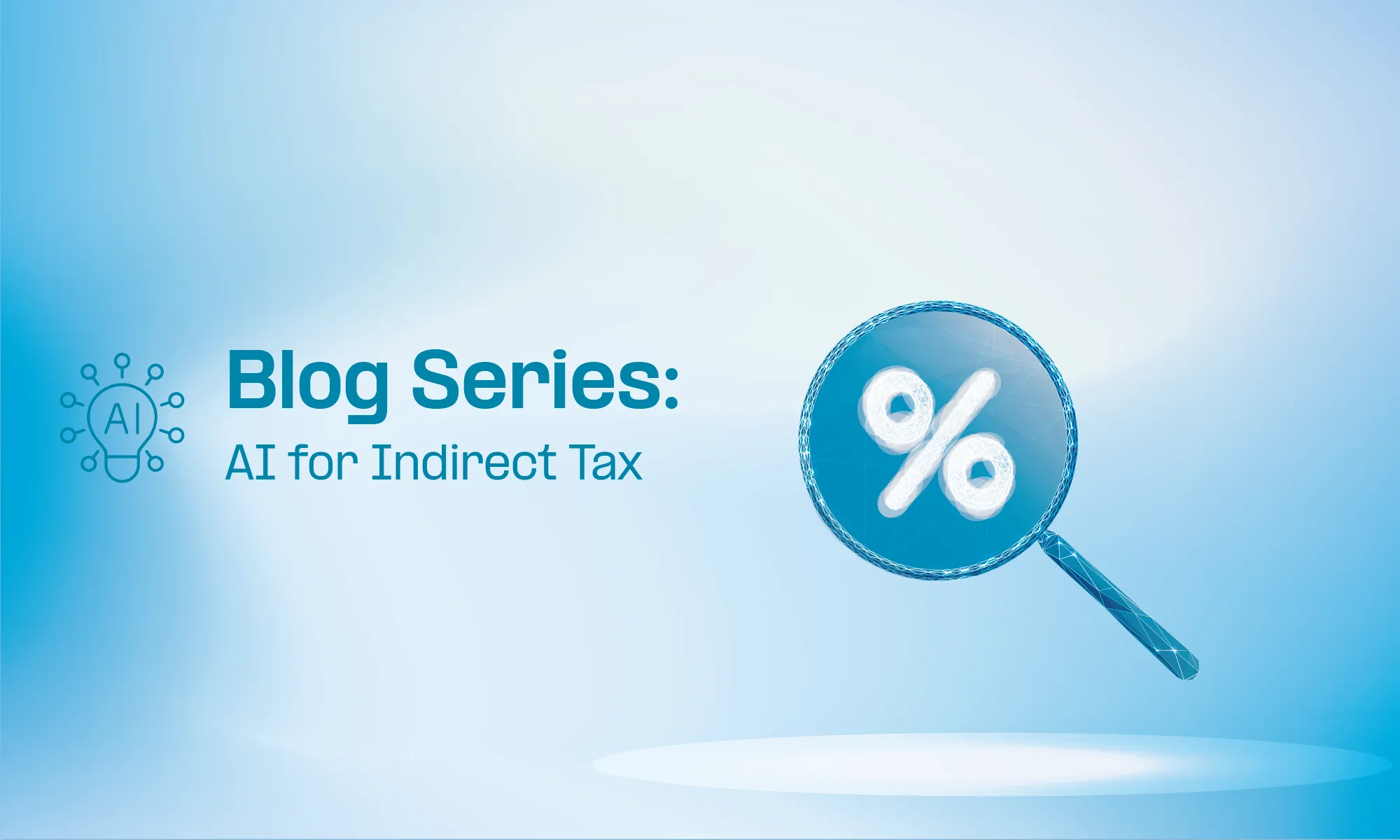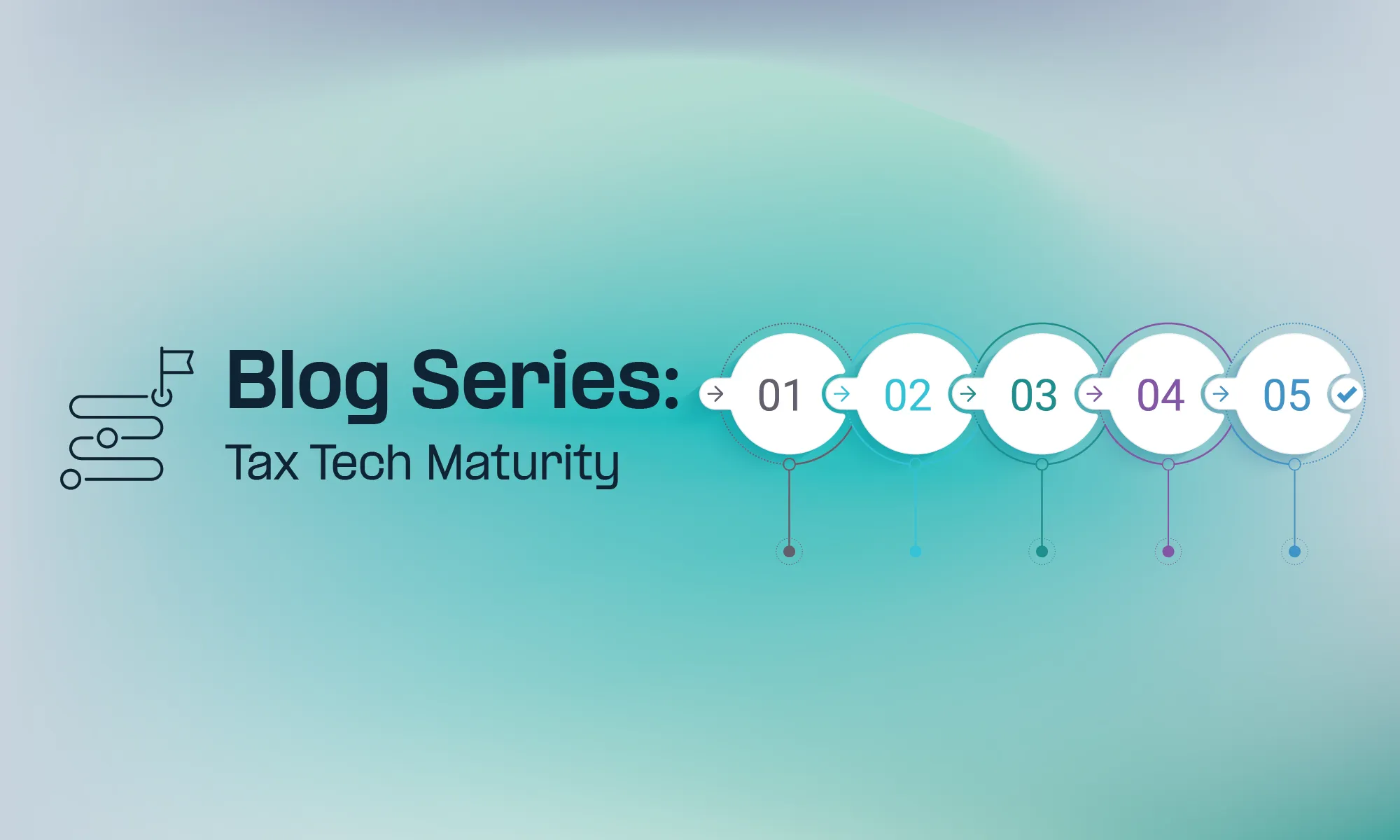How to Build an AI Strategy for Indirect Tax
A step-by-step guide for tax leaders on deploying AI safely. Understand deterministic vs probabilistic logic, risk controls, and practical AI use cases.

Leadership teams are asking every department for an AI plan. This guide shows you where AI belongs in your tax stack and how to deploy it without compromising compliance.
The shift to AI is already happening in indirect tax
Real-time reporting mandates mean 100% of your transaction data is now visible to tax authorities. Manual review and traditional rule-based systems can't keep pace.
AI becomes necessary. But it introduces uncertainty that most tax leaders aren't prepared to manage.
The difference between getting this right and getting it wrong? Understanding where AI strengthens your compliance posture versus where it creates unacceptable risk.
What you'll learn about AI implementation in tax compliance
Why AI makes tax decisions differently than any system you've used before
For decades, tax technology has operated on deterministic logic. Fixed rules that always produce the same answer. AI introduces probabilistic reasoning: learning from patterns and making predictions with varying degrees of confidence.
This isn't just a technical detail. It shapes everything from how you measure accuracy to what controls you need in place. The guide breaks down this fundamental shift using clear analogies (like paper maps versus GPS) that help your entire team understand what's actually changing.
How to measure compliance when perfection isn't the goal
Here's the uncomfortable truth: your current tax processes probably have hidden error rates you've never measured. Research shows material errors in 24% to 90% of complex spreadsheets used for tax calculations.
The guide explains why analyzing 100% of transactions at 93% accuracy catches more total errors than analyzing 10% at 97% accuracy. It's about breadth of coverage, not per-transaction perfection. You'll learn how leading tax teams use confidence thresholds to route high-confidence cases for auto-processing while flagging uncertain cases for human review. The result? Near-perfect accuracy achieved far faster than manual review alone.
A practical framework for mapping where AI belongs
Not every tax process suits AI equally. Transaction-level tax determination demands deterministic precision. A single error across millions of invoices creates compliance breaches. But anomaly detection across those same millions of invoices is something only AI can do effectively.
The guide provides a three-tier framework for evaluating AI fit:
- Determinism-critical: statutory formats, precise tax determination
- Hybrid: regulatory monitoring, rule exceptions
- AI-advantaged: anomaly detection, fraud identification, large-scale pattern analysis
This helps you avoid over-automation in high-risk areas while identifying the processes where AI clearly outperforms human review.
How to build controls that satisfy auditors and regulators
Adopting AI doesn't reduce the need for strong controls. It increases it.
The guide walks through the four pillars of AI control frameworks: confidence scores that translate uncertainty into actionable workflows, explainability techniques that satisfy external scrutiny, human oversight that prevents automation from becoming autopilot, and governance frameworks that catch systematic errors before they become problems.
You'll learn about shadow mode deployment, where companies log AI recommendations while still following old processes to build trust through comparison. You'll see how AI can actually create more transparent audit trails than undocumented human decisions. And you'll get a checklist of AI governance essentials, from model performance monitoring to incident response procedures.
Your step-by-step implementation roadmap
The guide closes with a practical checklist that takes you from education (helping your team understand deterministic versus probabilistic thinking) through mapping your processes, establishing thresholds, building governance, and tracking the metrics that actually matter.
It's not about deploying AI everywhere. It's about strategic deployment that keeps deterministic controls for bright-line compliance while leveraging AI where scale, pattern recognition, or speed outweighs the cost of occasional errors.
What tax leaders are saying about AI
When we surveyed nearly 200 indirect tax professionals, we found that 50.5% are curious but cautious about AI. Another 35.2% are excited about its transformative potential.
But here's what matters more: 45.5% have been asked multiple times by leadership for an AI plan.
The question isn't whether to adopt AI. It's how to do it responsibly while maintaining the rigor tax compliance demands.
Who should read this guide to AI in indirect tax
This guide is for you if:
- Your leadership team is asking about AI
- You need a framework that goes beyond vendor hype
- You're scaling indirect tax compliance across multiple jurisdictions
- You're navigating e-invoicing mandates and continuous transaction controls
- You want to understand where AI adds genuine value versus where it introduces risks
Or you're simply tired of AI pitches that promise to "transform your entire tax function" without explaining which specific processes should actually trust probabilistic reasoning.
About Fonoa
For AI to thrive in tax operations, it needs structured, mature tax technology to build on. Without accurate data, reliable integrations, and robust controls, AI becomes a risk rather than an advantage.
Fonoa provides the tax technology foundation that makes AI adoption safe and effective. Our platform delivers the structured data, deterministic controls, and global coverage across 100+ countries that turn AI from uncertainty into strategic capability.
Download the complete guide
Get the full framework for deploying AI in indirect tax. Based on academic research, industry case studies, and emerging standards from organizations like NIST and OECD.










